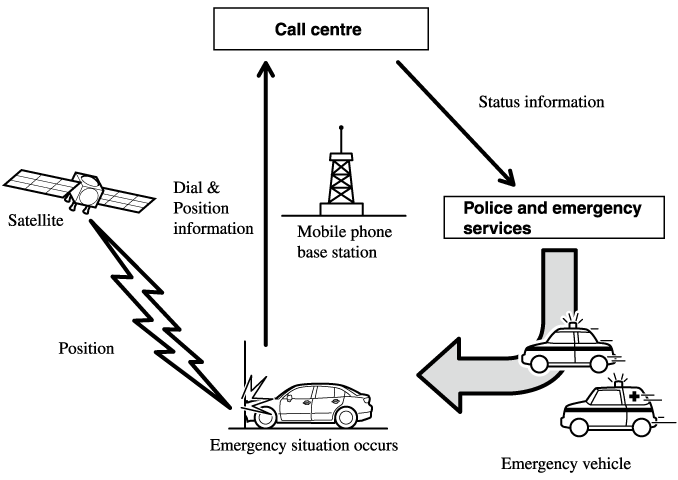

Emergency Call System
When an emergency situation such as an accident or sudden illness occurs, the Emergency call system dials the call centre automatically or the user can make a call to the call centre manually to enable a voice call.
The system operates automatically when the vehicle receives an impact of a certain level or more in a collision, or it can be operated manually using the Emergency call switch if an emergency situation arises such as sudden illness.
The call centre operator confirms the status via the voice call, confirms the vehicle's position information using the GNSS*1, and calls the police or emergency services.
-
GNSS, short for “Global Navigation Satellite System”, is a system that obtains the vehicle's current location by receiving radio waves emitted from the GNSS satellites to the ground.



